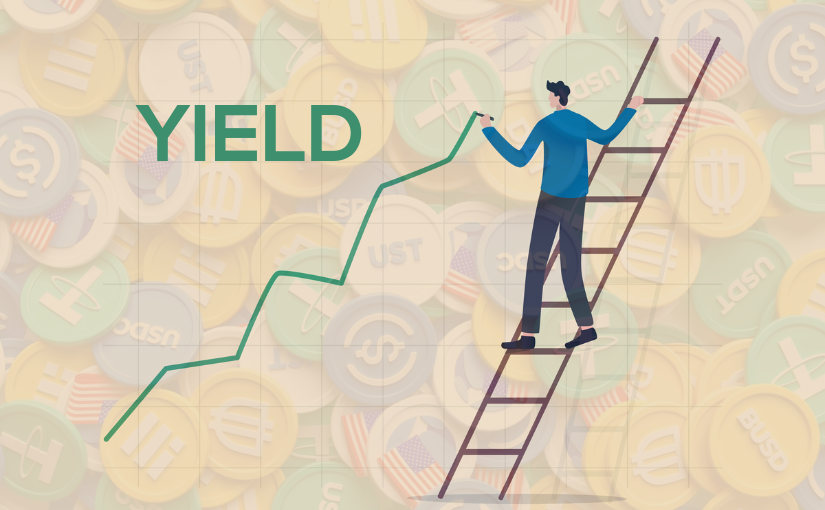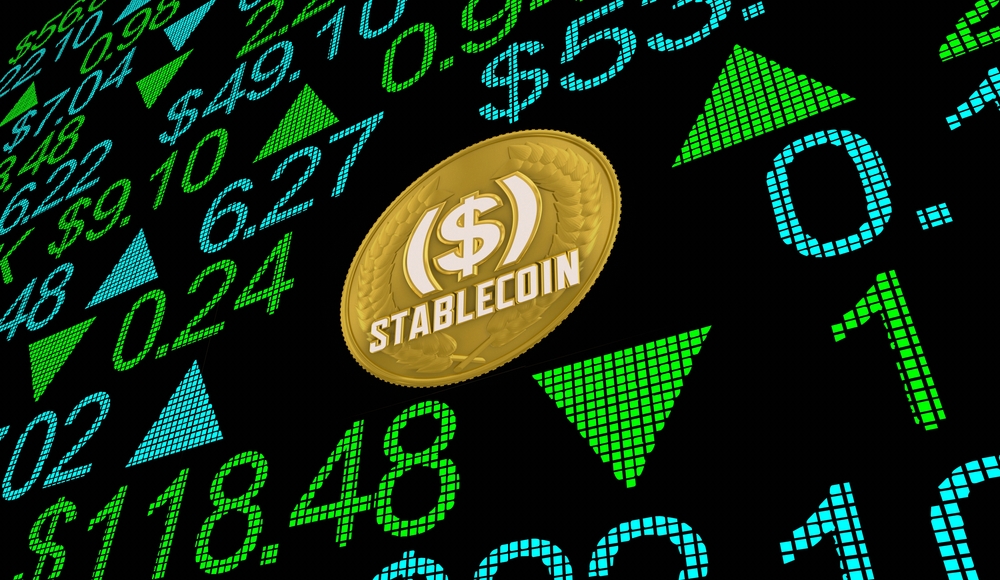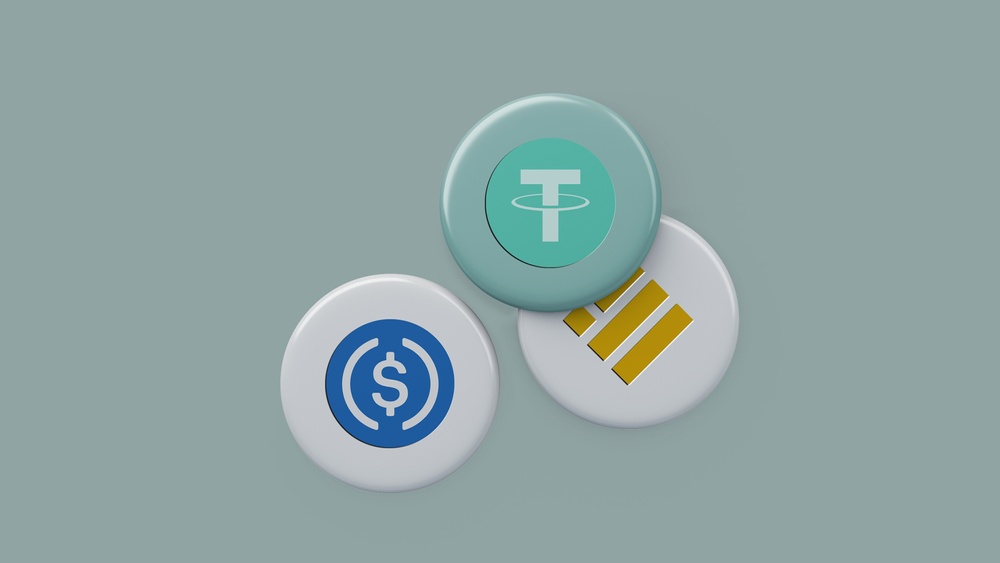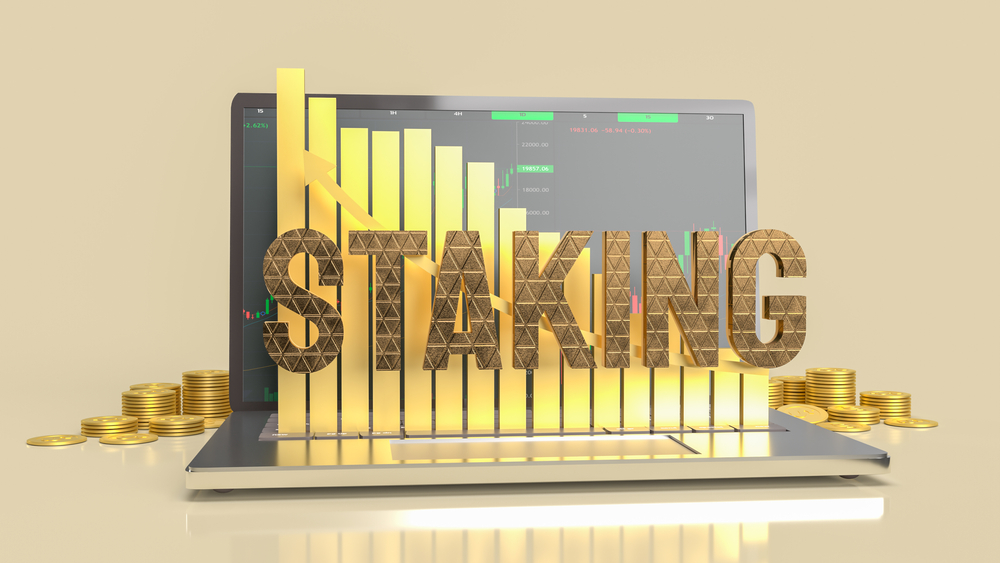
Ever felt like the crypto space is all about wild swings and risky bets? What if I told you there’s a way to grow your portfolio steadily without the constant fear of market crashes? Sounds like a dream, right? Well, let me introduce you to the world of real yield stablecoins. They’re not just stable in value—they’re also designed to generate consistent returns. Yes, you can finally earn in crypto without stressing over overnight losses.
Before we get into the details, think about this: Why do we instinctively believe stablecoins are safe? They’re pegged to assets like the US dollar, and that alignment inspires trust. But are they really as risk-free as they seem? Let’s unpack this idea together.
Why Most People Think Stablecoins Are Safe (But There’s More to It)

Stablecoins have earned a solid reputation as the “safe zone” of crypto investments. But does this mean they’re truly free of risks? Not exactly. Let’s break down the current perception and see what lies beneath the surface.
The Current Perception of Stablecoins and Their Risks
It’s easy to see why stablecoins are considered low-risk. They’re pegged to traditional currencies like the USD, EUR, or even commodities like gold. Knowing their value doesn’t swing wildly like Bitcoin or Ethereum makes them appealing, especially to cautious investors. But here’s the catch:
- Regulatory Risks: Some stablecoins face scrutiny from regulators. Governments may crack down on them, impacting their usability and value.
- Depegging Dangers: Occasionally, a stablecoin loses its peg to the asset it’s tied to—something you might’ve seen happen with TerraUSD (UST).
- Shady Management: Not all stablecoin issuers maintain full transparency about their reserves. This creates trust issues in the market.
So no, not all stablecoins are as stable as they may sound. But does that mean you should avoid them? Not quite—there’s more to the story.
Why “Low Risk” Doesn’t Mean “No Risk”
Even the biggest names in stablecoins, like USDC or USDT, come with their own set of risks. For example, while these are usually backed by fiat, what happens during turbulent market conditions? Trust depends heavily on collateral transparency and proper management. Without these, even the best stablecoins can wobble.
Then there’s the bigger picture of the crypto industry. DeFi platforms (where stablecoins are often used) can also experience hacks, smart contract bugs, or sudden liquidity drops. That’s why understanding the risks isn’t optional—it’s essential for maximizing returns.
What Are “Real Yield” Stablecoins, and How Are They Different?
While traditional stablecoins mostly focus on staying pegged to a consistent value, real yield stablecoins go one step further—they generate sustainable returns. Instead of relying on risky, high-yield tactics like some lending platforms do, real yield strategies focus on:
- Decentralized Finance (DeFi): Leveraging interest-earning strategies that aren’t overly aggressive, like lending protocols or transaction fees.
- Sustainability: Real yield stablecoins avoid “Ponzi schemes” where returns depend on attracting new investors. Their returns are based on real initiatives that drive revenue.
- Risk Management: They focus on smaller, more reliable growth rather than promising unrealistic, flashy gains.
If that’s confusing, let me simplify: real yield stablecoins are here to marry safety with income generation. They strike a balance that many investors crave but rarely find in traditional DeFi platforms.
So, are you curious about how stablecoins can create income streams without exposing you to big risks? Stick around, because in the next part, we’ll see exactly how these coins operate and uncover the smart strategies behind their yields.
How Stablecoins Generate Income Without Big Risks

Let’s get something straight—stablecoins aren’t just sitting ducks in your wallet. They have the power to quietly grow your portfolio when used the right way. But how exactly does this magic happen without taking on wild risks? Let me break it down in a way that doesn’t sound like a finance lecture!
Popular Stablecoin Strategies: Lending and Staking
Stablecoins have found their groove in lending and staking protocols, and these methods are pretty straightforward.
- Lending: Platforms like Aave or Compound allow you to lend your stablecoins. When you lend, someone else borrows, and you earn interest. What’s great is that most of these platforms are built to prioritize security, using smart contracts to automate the borrowing and lending processes.
- Staking: Staking involves locking up your stablecoins in protocols like Curve or Lido for a specific time. Think of it as parking your coins, and in return, you get rewards or interest. Many investors love staking because it’s predictable and doesn’t require constant monitoring.
For instance, some users on lending platforms have reported earning around 3-7% annual percentage yield (APY) on their stablecoins, according to community reviews on Reddit. It’s not outrageous, but it sure beats letting your assets sit idle doing absolutely nothing.
Why Real Yield Methods Are Considered Safer
Here’s where things start to get interesting. Real yield strategies focus on creating sustainable income rather than running risky gimmicks that promise huge but unsustainable returns. The keyword here is real. The goal isn’t to pump up the numbers to hook you—it’s to create long-term reliability.
Here’s how they typically work:
- Yield Farming: Platforms earn fees from decentralized exchanges or other financial activities and redistribute them to you. For example, protocols like GMX have been known to focus heavily on real revenue instead of speculative gains.
- Protocol Fees: Some stablecoin projects generate income from transaction fees within their ecosystem, ensuring that rewards come from genuine economic activity.
- Token Burns: In certain cases, stablecoins reduce supply by burning tokens, effectively creating scarcity to benefit holders. This approach can steady the value, ensuring you’re not gambling on speculative spikes.
So, why is this safer? Because these strategies are grounded in actual revenue and operations—not pie-in-the-sky predictions. A great example of this comes from S&P Global’s report on stablecoins, which highlights how their yield models prioritize risk management and transparency. These aren’t just empty promises; they’re designed to hold up under scrutiny.
“It’s not about making the highest returns; it’s about making the surest returns.” – Aave user on r/DeFi
The real beauty of these methods lies in their consistency. You won’t see flashy double-digit returns, but you also won’t wake up to your investments tanking overnight either. You’re building something stable, something reliable, and in a world this crazy, isn’t that what we all want?
Ready to explore real-world examples of stablecoins that are nailing these safer strategies? Stick with me, because next, we’re talking about the biggest players and some exciting new contenders in the real yield space. Could one of them be the perfect fit for you? Let’s find out.
The Most Popular Real Yield Stablecoins You Should Know

When it comes to stablecoins, the usual suspects—USDC, USDT, and FUSD—often take center stage. But where do they really fit into the world of real yield stablecoins? And what about the newer tokens shaking things up? Let’s take a close look so you know exactly what’s worth your attention and where you’ll find the best balance of returns and reliability.
USDC, USDT, and FUSD: Where do they fit?
You’ve probably heard of these household names in crypto—USDC, USDT, and FUSD—but how well do they contribute to real yield? These ultra-popular stablecoins are known for being highly liquid and widely accepted. Yet their role in creating sustainable yields varies, and that’s where things get interesting.
- USDC (USD Coin): Backed primarily by cash and short-term government bonds, USDC is all about transparency. While its use in generating yield involves lending and DeFi strategies, its reputation stems from being highly stable and audit-friendly. If you’re looking for peace of mind, this might be your choice.
- USDT (Tether): The giant everyone knows. Loved for liquidity, USDT is incredibly versatile. But here’s the catch: it has faced criticism for lack of transparency regarding its reserves. While it’s a DeFi favorite for yield generation due to its high trade volume, some still keep an eye on its stability.
Are they part of the real yield revolution? Not entirely. These stablecoins often work in traditional yield-generation strategies like lending and liquidity providing. However, they’re more of a foundation; newer options are leading the real yield charge—and they’re worth checking out.
Newer options: Which tokens focus on “real yield”?
This is where things get exciting. Some emerging stablecoins are flipping the script when it comes to earning. These projects focus on sustainable, long-term strategies to generate yield, built into their very design:
- LUSD (Liquity USD): Unlike fiat-pegged stablecoins, LUSD remains decentralized and collateralized by Ethereum through the Liquity protocol. It stands out by offering users rewards from protocol fees generated by loans. No centralized entity means more transparency—and many DeFi users have already started turning to it for steady returns.
- GHO (by Aave): The Aave protocol’s soon-to-launch algorithmic stablecoin promises an innovative approach to real yield. Borrowers mint GHO while still earning on their collateral, creating a dual-income strategy—something that could redefine passive returns.
- RAI (Reflex Index): RAI isn’t even pegged to a set currency, yet it provides incredible stability and yield powered by a mechanism that adjusts supply and demand dynamically. It’s drawing attention for how effectively it avoids regulatory and collateral risks.
The game-changer with these newer stablecoins? They’re designed with mechanisms to ensure that the yield is sustainable and backed by real revenue sources like fees or decentralized lending, without over-leveraging or relying on risky strategies.
As these options grow in popularity, they could drastically reshape the way we think of yield in the crypto space. It’s no exaggeration to say they could be the start of a smarter, more efficient way to grow wealth.
“It’s not how much money you make, it’s how much money you keep.” – Robert Kiyosaki
When you choose a real yield stablecoin, you’re making a move that keeps both stability and income in mind. You’re not just parking money—you’re upgrading your portfolio without unnecessary risks. Sounds like the dream, doesn’t it?
But before you start counting your passive income, there’s a catch—it’s not entirely risk-free, and earning yield isn’t always straightforward. What are the trade-offs? Is it really as good as it sounds, or do challenges lurk beneath the surface? Keep reading, and we’ll uncover the truth in the next part.
Is Earning Yield on Stablecoins Really Worth It?

Let’s face it—making money while you sleep sounds amazing, right? But when it comes to earning yield on stablecoins, is it truly worth your time, effort, and investment? People always rave about the steady returns, but like everything in life, there’s a flipside. Let’s break this down so you can decide if the “stable” path really fits into your financial plans.
Why Real Yield Strategies Are Tempting
The beauty of real yield stablecoins is their ability to strike a balance between stability and growth. Instead of taking wild risks, you get to enjoy predictable returns. Here’s why they’re catching everyone’s attention:
- Better Than Keeping Cash Under Your Mattress: Traditional savings accounts barely keep up with inflation. With real yield stablecoins, you can make around 5%-10% annually—depending on the platform and strategy. That’s way more than the 0.5% most banks offer on savings.
- Passive But Predictable: Unlike riskier crypto projects offering insane APYs (that often collapse), these coins use sustainable ways to generate returns. Whether it’s through lending fees, protocol rewards, or real DeFi mechanisms, the payout feels more reliable.
- Less Stress During Market Chaos: Imagine earning steady rewards without constantly checking the token price. Since stablecoins aim to stay pegged to assets like the US dollar, they’re much less frustrating to deal with than volatile cryptocurrencies.
It’s like Warren Buffett’s famous saying: “Risk comes from not knowing what you’re doing.” Real yield stablecoins reduce that “not knowing” factor, giving cautious investors some peace of mind.
The Challenges You Should Know About
Okay, so real yield stablecoins sound great on paper, but let’s not sugarcoat things. There are some hurdles you’ll need to work through to make this work:
- Fees Can Eat Into Your Profits: Network transfer fees, withdrawal costs, staking fees—they all add up. For example, if you’re moving stablecoins on Ethereum, gas fees during busy periods can seriously cut into your return. Platforms like Arbitrum or Avalanche might help reduce costs, but you still need to account for these expenses.
- Depegging Risks Are Real: While rare, stablecoins can lose their peg. If you’ve heard stories about UST’s collapse, you’ll know how quickly things can spiral out of control. Even the most trusted coins like USDC and USDT aren’t 100% failproof, though they’ve historically been stable.
- Tech Can Feel Overwhelming: Not everyone enjoys tinkering with DeFi protocols or navigating complex staking platforms. Some require tools like MetaMask, and for first-timers, the setup can feel intimidating. It’s manageable, but you’ll need patience to get it right the first time.
So, is earning on stablecoins still worth it? For many, yes! But only if you approach it knowing the risks, costs, and steps involved. One question to keep in mind: Can you handle the trade-off between high safety and smaller, steady earnings?
Here’s the kicker—sure, you could stick to a traditional bank, or even look at volatile crypto options. But why would you, when you can find the perfect middle ground? In fact, this might be the ideal opportunity for a specific type of investor…
Who Should Consider Investing in Real Yield Stablecoins

Perfect for Cautious Investors or Beginners
Let’s be real: the crypto world can feel like walking on eggshells. One minute, you’re watching your portfolio grow, and the next, it’s a rollercoaster ride into the red. Sound familiar? If you’ve been hesitant to jump into crypto because of this unpredictability, real yield stablecoins might be your oasis.
These coins are like the chill cousin at the family cookout. They don’t try to impress you with wild stories (or returns), but they’re steady, reliable, and just what you need when everything around you seems loud and chaotic. Since real yield stablecoins focus on generating income through sustainable strategies, they’re perfect for anyone who wants to see growth without the heart-stopping volatility.
Here’s who they fit best:
- First-time crypto investors: If you’ve never parked your money in crypto, real yield stablecoins give you a safer entry point without the steep learning curve or big risks.
- Risk-conscious savers: Maybe you’re looking for an alternative to traditional savings accounts that barely give you 0.5% interest. Stablecoins can change the game for you by offering returns without sacrificing stability.
I know, stability and crypto? Sounds like an oxymoron, but real yield stablecoins might just deliver it. “Confident investing doesn’t come from eliminating risk—it comes from managing it wisely.” Ready for your confidence boost?
Why Even Experienced Traders Are Diversifying
Here’s where things get interesting. Even some of the OGs of crypto—the ones who’ve weathered every Bitcoin crash and DeFi rug pull—are quietly adding real yield stablecoins to their portfolios. Why? Because seasoned traders know that all gains don’t need to be flashy, and sometimes predictability is the real flex.
Picture this: You’re an experienced trader who’s been riding the highs and lows for years. Maybe you have a few speculative plays in your wallet, but wouldn’t it feel good to allocate part of your funds to something that works harder and steadier in the background? That’s exactly the sweet spot real yield stablecoins hit.
Many pros are using these stablecoins to:
- Balance their portfolios: They use real yield stablecoins to cushion their funds against big market swings. This helps manage risk while still earning passive income.
- Generate consistent income: When staking or lending these stablecoins, traders can earn steady rewards while focusing on other high-return opportunities.
- Stay liquid: Unlike locking up funds for long-term investments, real yield stablecoins often provide more flexibility, making them easier to trade or transfer when needed.
It’s like having a safety net that also happens to pay you every month. Sure, it’s not the adrenaline rush of flipping tokens on the latest meme coin, but there’s a reason why pros call it smart money.
Here’s a quick thought experiment: If even the seasoned crypto warriors are parking money in these stablecoins, doesn’t that tell you something? What could your portfolio look like if you started earning a passive yield, too?
If that has your curiosity sparked, you’re probably now wondering how to actually get started. What’s the right coin? Which platform feels secure enough for your assets? Don’t worry—I’ve got you. Stick around, because next we’ll break it all down step by step, so you can start earning yields confidently without feeling lost.
A Step-By-Step Guide to Earning Yield on Stablecoins

So, you’re ready to put your stablecoins to work but don’t know where to start? Don’t worry—I’ve got you covered. Think of this as your personalized roadmap to get those rewards rolling in. Whether you’re totally new to crypto or you’ve been around for a while, these steps are designed to help you earn returns with confidence.
Picking the Right Stablecoin: What to Look For
Not all stablecoins are created equal, and choosing the wrong one could cost you dearly. So, how do you choose the right one? Here’s what I always check:
- Transparency: Does the project openly share how the coin is backed? USDC, for instance, is well-known for publicly showcasing its reserves.
- Reputation: Is the team or organization trustworthy? Look for stablecoins supported by big names in the industry. Consider coins like USDC or USDT, both of which have established credibility.
- Yield Potential: Some coins lean into real yield strategies, offering consistent payouts through fees, lending, and valid DeFi methods.
Pro tip: Spend extra time checking their track record. If something feels shady, skip it. You wouldn’t jump into a business deal without trust—crypto’s the same.
It’s like Warren Buffett once said, “Risk comes from not knowing what you’re doing.” In crypto, doing your homework is half the battle.
Choosing a Platform for Generating Your Yield
Picking the right stablecoin is just step one. The next challenge? Finding a platform to actually make your stablecoins earn for you. Again, not all platforms are safe or user-friendly. Here’s what works:
- For Beginners: Platforms like Aave or Curve. They’re pretty simple to use, highly trusted, and backed by large communities. It doesn’t get much safer than lending through Aave or staking liquidity on Curve.
- For Risk Takers: You may come across new or niche DeFi platforms with promises of higher APYs. Just know that “greater risk” tends to follow any reward spike.
Regardless of where you go, always check reviews and the platform’s security measures. Does it use multi-layer encryption? Are there any past hacking incidents? Remember, high returns mean nothing if your funds get locked or stolen.
How to Start Staking or Lending + Expected Returns
Ready for the fun part? Here’s where you actually get your hands dirty… figuratively speaking. Staking or lending stablecoins has become unbelievably easy, and most platforms guide you through the process. Let’s break it down:
- Step 1: Transfer your stablecoins to the platform wallet. For example, if you’re using Aave, connect your crypto wallet like MetaMask.
- Step 2: Choose a lending pool or staking option. These generally show projected returns upfront—think 2-8% APY depending on the platform and token.
- Step 3: Hit “deposit” or “stake.” In seconds, your funds will start earning. Platforms often show live updates of your rewards.
Curious what to expect? Stablecoins using “real yield” methods often promise consistent returns of around 2-5%, while more advanced DeFi setups can climb higher. Sure, it’s not life-changing money—but it’s steady, safe, and hassle-free.
If platforms like Curve make things easy, others may require your active involvement. You might need to track market trends or switch pools for better yields. Think of these strategies as “set it and forget it” versus “active earning.” Which style fits your life better?
And here’s a friendly heads-up—returns are never truly guaranteed. Platforms or tokens could experience technical hiccups or regulatory scrutiny overnight. But hey, how do you really stay safe?
Let me tell you, there’s an entire art to protecting your stablecoins, and trust me, you’ll want to know all about it. Got a minute to learn the critical tips before you park your funds? Keep reading—you won’t regret it.
Staying Safe: Tips to Protect Your Stablecoins

Watch out for shady platforms or unstable coins
Let’s be real: not everything that glitters in the crypto space is gold. Just because a platform promises mouthwatering returns doesn’t mean it’s trustworthy. If it feels too good to be true, it probably is. You wouldn’t hand over your hard-earned money to a stranger on the street, so why would you trust every platform throwing around fancy words like “DeFi” and “optimized yields”? Take a second to think before you act.
For example, there are stories in the crypto community where users trusted platforms offering insanely high APYs, only to lose everything when those platforms collapsed or got hacked. Stick with platforms that have visibly strong reputations, solid backing, and transparent financials. If a service can’t answer basic questions like, “How are you generating these yields?”—run.
Keep tabs on DeFi regulations and market changes
Crypto isn’t some “set it and forget it” game, especially when it comes to stablecoins. The landscape changes faster than you can say “blockchain.” Regulations are rolling out across the globe, and yes, they’ll affect your yields sooner or later.
Take the ongoing discussion around stablecoins by financial watchdogs—did you know that an S&P Global report found that rising investor awareness around stablecoins is reshaping the way regulators approach them? This means any sudden shift in law could disrupt an entire platform—maybe even overnight. Keeping yourself updated will help you avoid nasty surprises. Bookmark sites like CoinGecko or follow trusted Twitter threads to stay in the loop.
“Time spent in research is never wasted. In crypto, failing to watch the signs could cost you everything.”
One more thing to watch? Stablecoins themselves. Even big players like USDT have faced doubts during times of market turbulence. Stay informed about how well-collateralized the stablecoin you’re holding is. Pro tip: For anyone serious about protecting their bag, consider diversifying into multiple real yield stablecoins rather than relying on just one.
So… what’s next? If you’ve managed your risks, what’s the real opportunity here? And what makes real yield stablecoins stand out in the long game? Let’s figure it out.
Are Real Yield Stablecoins the Future of Passive Income?

Why they’re a strong appeal for the long term
Let’s be real—earning passive income in crypto isn’t always the smooth ride it promises to be. One day you’re rolling in gains, the next you’re watching your portfolio crash during a market dip. But what if there’s a way to sidestep all that drama? That’s where real yield stablecoins shine.
Unlike other hype-driven projects that promise flashy returns but fizzle out, real yield stablecoins prioritize sustainable growth. These coins are backed by actual mechanisms, like revenue from DeFi platforms or lending protocols. This steady and consistent approach makes them a breath of fresh air in a space where rug pulls and volatility can sometimes dominate.
Take, for example, how protocols like Aave or Curve integrate stablecoins into their systems. They offer realistic yet dependable returns—not sky-high rates that scream “too good to be true.” A little consistency goes a long way, and for many investors, this is all about balancing their portfolios with something reliable. It’s like having the best of both worlds: the stability of fiat without sacrificing the opportunity for meaningful growth in the crypto space.
Comparing real yield stablecoins with other passive-income trends
Now, if you’re weighing your options, you’ve got plenty of other passive-income trends to check out—liquidity farming, staking volatile tokens, or even high-yield platforms. But here’s the problem: these alternatives often come with risks that might give even the most experienced investors a headache.
For example, liquidity farming might offer high APYs, but the tokens you’re holding could suddenly drop in value overnight. Staking volatile assets? You’re not just earning rewards; you’re also exposed to the constant rollercoaster ride of market prices. Compare that with stablecoins that focus on real yield, and you’ll see why so many are choosing the latter. The returns might not make headlines, but they also won’t come with a side of heartburn.
Let’s not forget: stablecoins also avoid the major risks tied to newer, unproven passive-income trends. Unlike speculative investments, you’re putting your assets into time-tested platforms generating returns in ways you can actually trace. Even Reddit threads often point out how stablecoin yield strategies are some of the safest plays (check out this discussion here). Safety, visibility, and steady growth? Sounds like a combo worth exploring, doesn’t it?
Still, not everything is sunshine and rainbows. Stablecoins, especially those focused on yielding real returns, still sit in a world where regulations, platform-specific risks, and broader market changes could shift things. Staying informed is a big part of playing the game. There’s an interesting report by S&P Global that breaks down how awareness around stablecoins is growing—it’s worth reading to keep up with the evolving narrative.
So, are real yield stablecoins ready to dominate the future of passive income in crypto? Or will the next trend steal the spotlight? And most importantly—how do you figure out if this strategy is right for you?
Wrapping Things Up: Are Real Yield Stablecoins Right for You?

Letting Your Money Work Smarter, Not Harder
There’s just something satisfying about earning passive income without constantly stressing over market swings or obscure charts. Real yield stablecoins hit this sweet spot by blending the steadiness of traditional finance with the innovation of crypto. Instead of chasing risky coins or hoping for a market pump, these stablecoins let you make measured and smart decisions.
Think about it—your funds aren’t just sitting idle in a savings account collecting dust (and, let’s face it, minimal interest). With real yield stablecoins, you’re giving your money a job. Whether it’s through cautious lending, DeFi protocol rewards, or sustainable staking, these coins offer a way to earn a return that feels more dependable. Sure, it’s not a “get-rich-quick” scheme, but who’s complaining about steady, predictable growth?
Final Tips Before You Start Earning Stablecoin Yield
So you’re interested—that’s great! But before you go all in, remember that even the most solid opportunities require a bit of preparation:
- Research deeply: Platforms like Aave or Curve have solid reputations, but always check what you’re getting into. Platforms with shady audits or zero transparency are an instant red flag.
- Start small: Maybe start with a portion of your portfolio instead of throwing in everything. That way, you get comfortable without too much at stake.
- Keep tabs on fees: Some platforms might look great at first glance but eat into your profits with high gas fees or platform charges. It’s good to double-check everything.
- Stay informed: Follow updates in the DeFi space or bookmark trusted news sources. This way, you’ll always know if a bigger regulatory storm or depegging risk is around the corner.
By sticking to these principles, you’re setting yourself up for a smoother experience. The idea is to work smarter, not harder, remember?
Conclusion: Take the First Step Today
Whether you’re a crypto newbie or you’ve been here long enough to remember Bitcoin at $1, real yield stablecoins are a unique opportunity to mix safety with growth. They’re not flashy, but that’s part of their charm—you just let the system work while you enjoy returns in the background.
If you’ve been looking for a way to grow your assets without the usual stomach-churning volatility, this might be the path for you. The best part? You can start with just a little, test the waters, and scale up once you’re comfortable. So why not take that first step today? Who knows, this could be the most stable decision you’ve made in crypto.